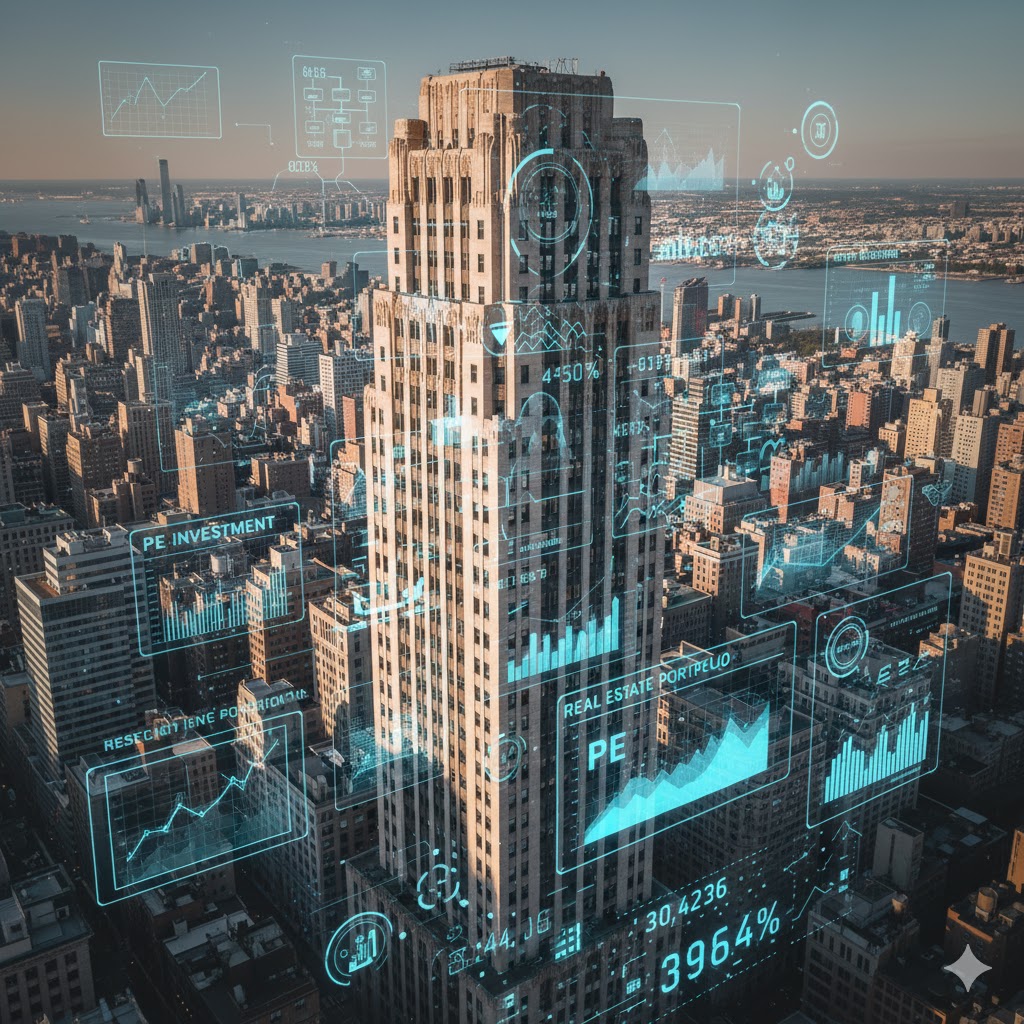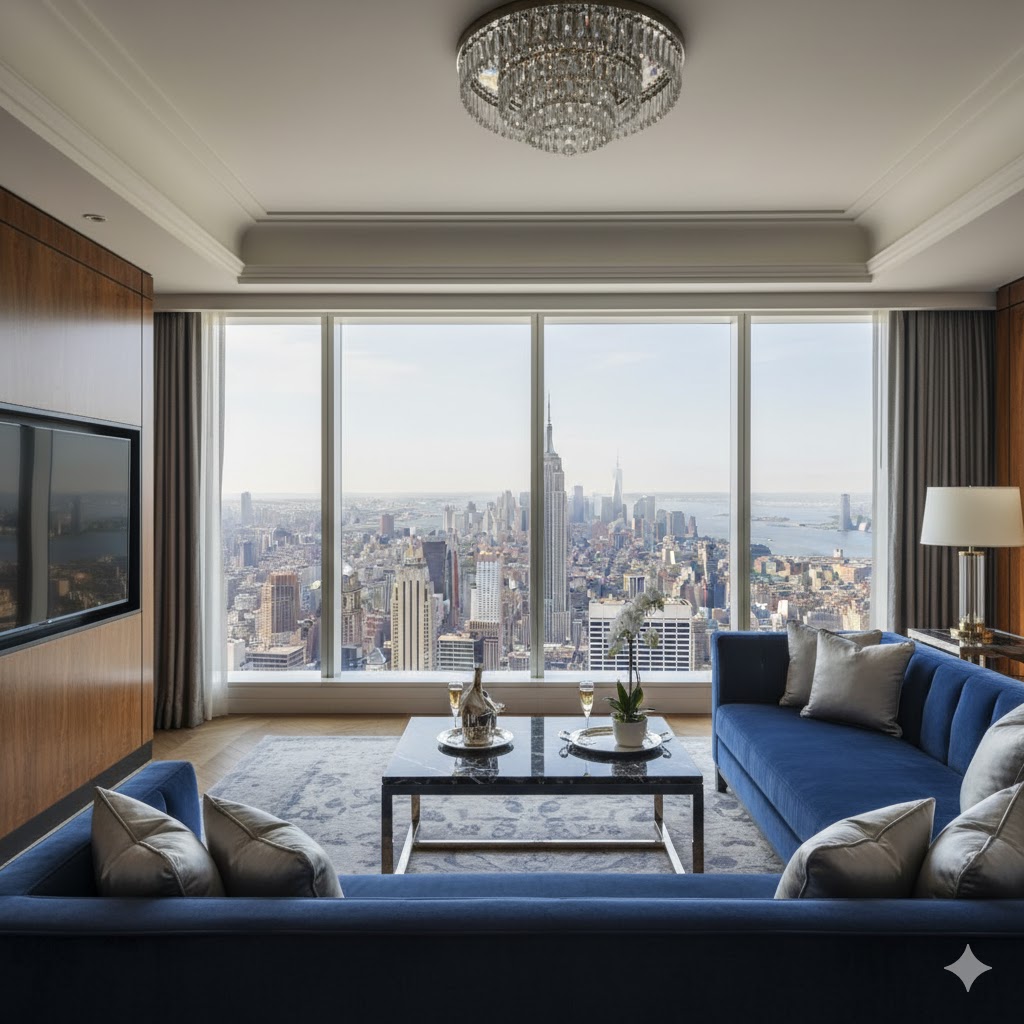The Role of Private Equity (PE) Firms in NYC’s Real Estate Market

NYC Wealth Guides
Discover curated insights and exclusive opportunities for High-Net-Worth Individuals in the heart of New York City.
The Role of Private Equity (PE) Firms in NYC’s Real Estate Market
The iconic Manhattan skyline is not just shaped by visionary developers; it is increasingly *owned* by Private Equity (PE) firms. In New York City, real estate is not just “property”; it’s a multi-trillion dollar financial asset class. PE firms are the new “Titans” of this asset class, buying, repositioning, and selling everything from office towers and luxury condos to vast apartment portfolios and logistics hubs.
At AZ New York, we guide our HNW clients on how to invest alongside these firms. Understanding their role is critical to understanding the *true* value and flow of capital in NYC real estate. They are not traditional landlords; they are asset managers playing a long-term game of financial optimization.
The “Titans” of NYC Real Estate Private Equity
These are the largest and most influential PE firms whose “Real Estate” divisions are dominant forces in the New York market.
- Blackstone: The undisputed 800-pound gorilla. Blackstone is the largest owner of commercial real estate on the planet, and their NYC portfolio is massive. They are famous for their $5.5B purchase of Stuyvesant Town-Peter Cooper Village.
- Brookfield Asset Management: A Canadian giant with a massive NYC footprint. They are one of the largest landlords in Manhattan, owning iconic properties like Brookfield Place and having redeveloped Manhattan West.
- KKR (Kohlberg Kravis Roberts): A legendary PE firm (from our careers guide) with a formidable real estate arm. They actively acquire and manage trophy office, residential, and industrial properties in the city.
- The Carlyle Group: A global PE firm with a long history of investing in the NYC market, focusing on “value-add” and “opportunistic” repositioning of assets.
- SL Green Realty: While technically a public REIT, SL Green *acts* like a PE firm. They are Manhattan’s largest office landlord and a dominant “value-add” player, famous for building the One Vanderbilt tower.
- Related Companies: The developer-manager-PE hybrid that *built* Hudson Yards. They are a prime example of a firm that raises PE funds to execute massive, ground-up development projects.
The Core Conflict: “Core” vs. “Value-Add” vs. “Opportunistic”
This is the fundamental pedagogical framework for *all* real estate investing. PE firms “raise funds” dedicated to one of these three strategies. The conflict is about *Risk vs. Return*.
| Strategy | The “Playbook” | NYC Example |
|---|---|---|
| Core (Low Risk) | “Buy & Hold.” Buy a “trophy” asset (like a new, fully-leased office tower) and collect rent. Low leverage, stable cash flow. | Buying a 99%-leased office building in Midtown with a 20-year lease from a bank. |
| Value-Add (Medium Risk) | “Fix & Flip.” Buy a “B-grade” asset (like an older, 70%-leased building), renovate it, and re-lease at higher rents. | Buying an old SoHo warehouse, adding modern amenities, and leasing it to a tech company. |
| Opportunistic (High Risk) | “Build or Repurpose.” Ground-up development (like Hudson Yards) or buying a distressed asset (like a dead mall or an empty hotel). | Buying an empty, post-COVID office tower and converting it into luxury residential condos. |
The Expert’s View: The “Speculator” vs. The “Long-Term Investor”
The “flashing lights” of NYC real estate often attract speculators, but the PE giants are disciplined investors.
- The “Speculator”: This is the classic “flipper” or foreign buyer who buys a Billionaires’ Row condo as a “speculation” on price, with no regard for “cap rate” (income). They are betting purely on price appreciation, often fueled by “easy money.”
- The “Investor” (The PE Firm): A PE firm like Blackstone is a pure investor. They do not speculate. They *only* buy an asset if their LBO model shows they can generate a target “Internal Rate of Return” (IRR) of 15-20%+. They create this return *themselves* through operational improvements, financial engineering (debt), and leasing. They invest in *cash flow*, not just “hype.”
As the AZ New York team often reminds clients, “You can’t control the market price, but you *can* control the operations.” PE firms focus on what they can control.
Real-World NYC Scenarios: The PE Playbook in Action
1. The “Take-Private” (The Blackstone Play)
Scenario: A publicly-traded NYC REIT (Real Estate Investment Trust) is “undervalued” by the stock market.
The PE Playbook: Blackstone’s “Opportunistic” fund (BREIT) will make a $10B all-cash offer to buy the *entire* public company and “take it private.” They believe they can manage the assets *better* (e.g., cut costs, raise rents) than the public management could, and they can re-sell the portfolio 5 years later for a $5B profit, generating a 20% IRR for their investors.
2. The “Office-to-Resi” Conversion (The Opportunistic Play)
Scenario: A 1970s “Class B” office building near FiDi is 50% empty due to “Work From Home.” It’s a distressed asset.
The PE Playbook: A “Value-Add” or “Opportunistic” firm (like Carlyle) will buy the building for “pennies on the dollar” from a bank. Their model is *not* based on finding new office tenants. Their model is based on a *full conversion*. They will spend $100M to gut the building and convert it into 300 luxury apartments, betting that the *residential* lease revenue will be far higher than the (dead) office revenue.
3. The “Logistics Hub” (The “Hot” Sector)
Scenario: PE firms realize that “e-commerce” (see our Silicon Alley guide) requires massive “last-mile” warehouses.
The PE Playbook: Firms like Blackstone and KKR have spent *billions* buying up every warehouse and logistics center in the “five boroughs” (especially Queens, Brooklyn, and the Bronx). They are not “speculating.” They are “investing” in the essential *infrastructure* of the new economy, knowing Amazon and other retailers *must* pay them high rents for access to the NYC market.
Frequently Asked Questions (FAQ)
Q: What is an “LBO” Model?
A: LBO stands for “Leveraged Buyout.” This is the core financial model for all Private Equity (see our careers guide). The PE firm buys a company (or a building) using a *small* amount of their own money (e.g., 30%) and a *large* amount of debt (e.g., 70%). The building’s *own rent* is used to pay off the debt. This “leverage” is what magnifies their returns from 10% to 20%+.
Q: What is a “Cap Rate”?
A: The “Capitalization Rate” is the “dividend yield” of a building. It is the building’s Net Operating Income (NOI) / its Purchase Price. A low cap rate (3-4%) means a “safe,” expensive, trophy building (like in Midtown). A high cap rate (7-8%) means a “riskier,” cheaper building (like in an emerging neighborhood or a distressed asset).
Q: How can an individual (HNWI) invest in these deals?
A:
- Directly (UHNWI): If you are an UHNWI, you can invest *directly* in a PE fund (e.g., a $10M+ commitment to a Blackstone fund).
- Publicly (REITs): You can buy shares in public REITs (like SL Green) that are run with a PE mentality.
- Syndicates: You can invest in smaller “syndicated” deals (via firms like CrowdStreet) that are run by smaller PE-style operators.
Keywords for Your Next Internet Search
Private Equity real estate NYC, Blackstone real estate, Brookfield Asset Management NYC, KKR real estate, The Carlyle Group, SL Green, Related Companies Hudson Yards, Core vs Value-Add vs Opportunistic, What is a cap rate, LBO model real estate, how to invest in PE real estate, NYC commercial real estate, office to residential conversion NYC, Stuyvesant Town Blackstone, AZ New York real estate
NYC Wealth Guides: Full Index
- NYC’s Top 15 Private Wealth Management Firms for HNWIs
- A Guide to Family Offices in New York City: Services, Focus, and Fees
- Comparing NYC’s Elite Private Banks: JPMorgan vs. Goldman Sachs vs. Morgan Stanley
- Choosing a Fiduciary Advisor in NYC: 10 Questions for International Investors
- Tax Strategies for High-Net-Worth Individuals Residing in New York
- Multi-Family Offices in NYC: A Guide for Ultra-High-Net-Worth (UHNW) Families
- Asset Protection Strategies: Top NYC Law Firms for HNWIs
- Understanding Trust and Estate Planning with NYC’s Top Legal Experts
- The Boutique Wealth Management Advantage: NYC’s Niche Firms
- Cross-Border Wealth Management: NYC Firms Specializing in European & LATAM Clients
- The 20 Most Active Venture Capital Firms in NYC for Seed-Stage Startups
- A Founder’s Guide: How to Pitch to NYC VCs and Secure Funding
- Understanding Term Sheets from New York’s Top Tech Investors
- NYC’s Top 10 FinTech Accelerators and What They Look For
- Exit Strategies: The Top NYC Law Firms for Tech Startup Acquisitions
- “Silicon Alley” Decoded: The Key Players in NYC’s Tech Ecosystem
- Top 10 B2B SaaS Investors in New York City
- Angel Investors in NYC: A Guide for Pre-Seed Startups
- The Rise of HealthTech and BioTech VCs in New York City
- Navigating a Down Round: Advice from NYC Venture Capitalists
- A Profile of Manhattan’s 10 Largest Hedge Funds (The ‘Titans’ of NYC)
- Inside Wall Street: Understanding High-Frequency Trading (HFT) Firms in FiDi
- Careers in NYC Finance: Asset Manager vs. Hedge Fund Analyst vs. PE Associate
- The Role of Private Equity (PE) Firms in NYC’s Real Estate Market
NYC’s Top 15 Private Wealth Management Firms











